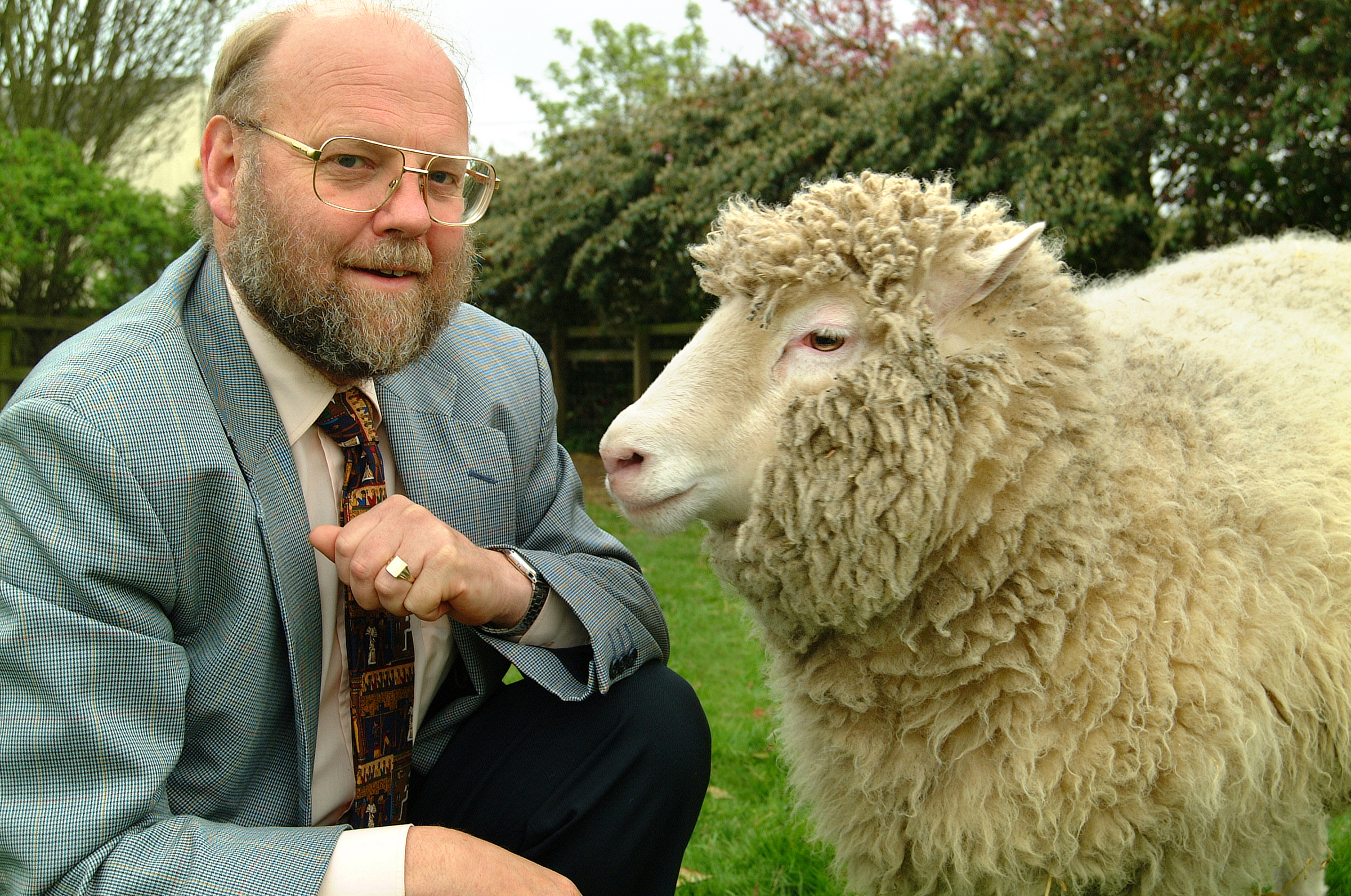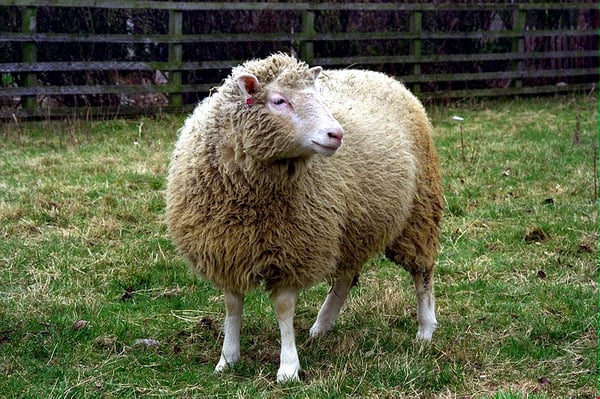
Blog: Professor Sir Ian Wilmut: Pioneer of Genomics and Bioinformatics
In the ever-evolving landscape of genomics and bioinformatics, few individuals have made as profound and lasting contributions as the late Professor Sir Ian Wilmut. Known primarily for his groundbreaking work in cloning, Professor Wilmut's achievements extend far beyond that single milestone. His career was marked by a relentless pursuit of knowledge and innovation, significantly impacting our understanding of genetics and its future possibilities. We will explore the remarkable contributions and pioneering work of the late Professor Sir Ian Wilmut to genomics and bioinformatics, enduring the legacy he created.
The Birth of Dolly the Sheep
Professor Ian Wilmut's journey into the world of genomics began with a groundbreaking experiment that would capture the world's imagination. In 1996, along with his team at the Roslin Institute in Scotland, he successfully cloned a mammal that was once thought to be impossible. This historic achievement led to the birth of Dolly the sheep, the first cloned animal created from an adult somatic cell.
Dolly's cloning was not merely a scientific marvel; it represented a paradigm shift in our understanding of genetics and the potential applications of cloning technology. Dolly's birth shattered the previously held belief that adult cells were terminally differentiated and could not be reprogrammed to become a whole organism. Professor Wilmut's work demonstrated that with the right techniques, mature cells could be reprogrammed to an embryonic state, offering new avenues for research and medical applications.
Dolly's creation opened doors to numerous possibilities, from the production of genetically modified animals for medical research to the potential for cloning endangered species. Professor Wilmut's work ignited a new era in genomics and biotechnology while the ethical implications of cloning continue to be debated.

Stem Cells and Regenerative Medicine
Following the success of Dolly's cloning, Professor Wilmut continued to explore the potential of his groundbreaking techniques. He turned his attention to the field of regenerative medicine and stem cell research. By reprogramming adult cells into pluripotent stem cells, he paved the way for the development of patient-specific treatments and therapies.
This breakthrough in stem cell research was a game-changer. It offered the possibility of generating replacement tissues and organs for patients, eliminating the need for organ transplantation and the associated risks of rejection. regenerative medicine, with the hope of finding cures for a wide range of diseases. Professor Wilmut's work inspired a new generation of scientists to study regenerative medicine, with the hope of finding cures for a wide range of diseases.
While he did not achieve the same level of global recognition as Dolly, Professor Wilmut's contributions to stem cell research were equally revolutionary. His work laid the foundation for future breakthroughs, positioning stem cell therapy as a viable and promising avenue for the treatment of various medical conditions.
Genomic Imprinting and Epigenetics
In addition to the biological aspects of genomics, Professor Wilmut's contributions extend into the realm of bioinformatics, a critical component of modern genomics research. Genomic imprinting refers to the differential expression of genes depending on whether they are inherited from the mother or the father. This phenomenon has profound implications for development and disease.
Professor Wilmut's research in this area illuminated the intricate mechanisms behind genomic imprinting and the role of epigenetic modifications in gene regulation. His work not only deepened our understanding of the molecular basis of diseases but also provided insights into potential therapeutic targets.
Furthermore, his research highlighted the importance of epigenetics in shaping an individual's traits and susceptibility to diseases. This field has since grown exponentially, with scientists worldwide exploring the role of epigenetics in various aspects of biology, from development to disease progression.
Bioinformatics: Bridging the Gap
In addition to the biological aspects of genomics, Professor Wilmut's contributions extend into the realm of bioinformatics, a critical component of modern genomics research. Bioinformatics involves the use of computational tools and techniques to analyze and interpret vast amounts of genomic data.
In an era when genomic data was accumulating rapidly, the need for effective methods for genomic data analysis and making sense of this information became increasingly important. Professor Wilmut recognized this need and played a pivotal role in promoting the integration of bioinformatics into genomics research.
His support for bioinformatics research and his collaboration with experts in the field helped bridge the gap between biological experimentation and data analysis. By leveraging the power of computational tools, researchers could extract meaningful insights from genomic data, leading to a deeper understanding of genetics and its applications.
Legacy and Future Prospects
Professor Sir Ian Wilmut's contributions to genomics and bioinformatics have left an indelible mark on the scientific community. His pioneering work in cloning, stem cell research, genomic imprinting, and bioinformatics has shaped the landscape of modern biology and medicine. The impact of his discoveries continues to reverberate through ongoing research and clinical applications.
One of the most significant legacies of Professor Wilmut's work is the potential for personalized medicine. The ability to reprogram cells, understand genetic variations, and harness the power of epigenetics opens the door to tailoring medical treatments to individual patients. This personalized approach has the potential to revolutionize healthcare, offering more effective and targeted therapies with fewer side effects.
Additionally, his contributions to bioinformatics have paved the way for advancements in fields such as pharmacogenomics and precision medicine. Pharmacogenomics uses genetic information to optimize drug therapies and precision medicine seeks to provide the right treatment to the right patient at the right time.
Conclusion
Professor Sir Ian Wilmut's journey through the realms of genomics and bioinformatics has been nothing short of extraordinary. His groundbreaking work with Dolly the sheep opened up new possibilities in cloning and stem cell research. And, his investigations into genomic imprinting and epigenetics shed light on the intricate molecular mechanisms that govern our genetics.
Furthermore, his advocacy for bioinformatics has facilitated the seamless integration of computational biology tools into genomics research. This has enabled scientists to make sense of the vast amount of data generated by genome sequencing projects.
As genomics and bioinformatics shape the future of medicine and biology, Professor Wilmut's contributions will continue to inspire and demonstrate the power of scientific curiosity and innovation. His legacy is a reminder of the power of determination, creativity, and a relentless pursuit of knowledge. With these qualities, we can unlock the secrets of the genome and transform healthcare and biology for generations to come.